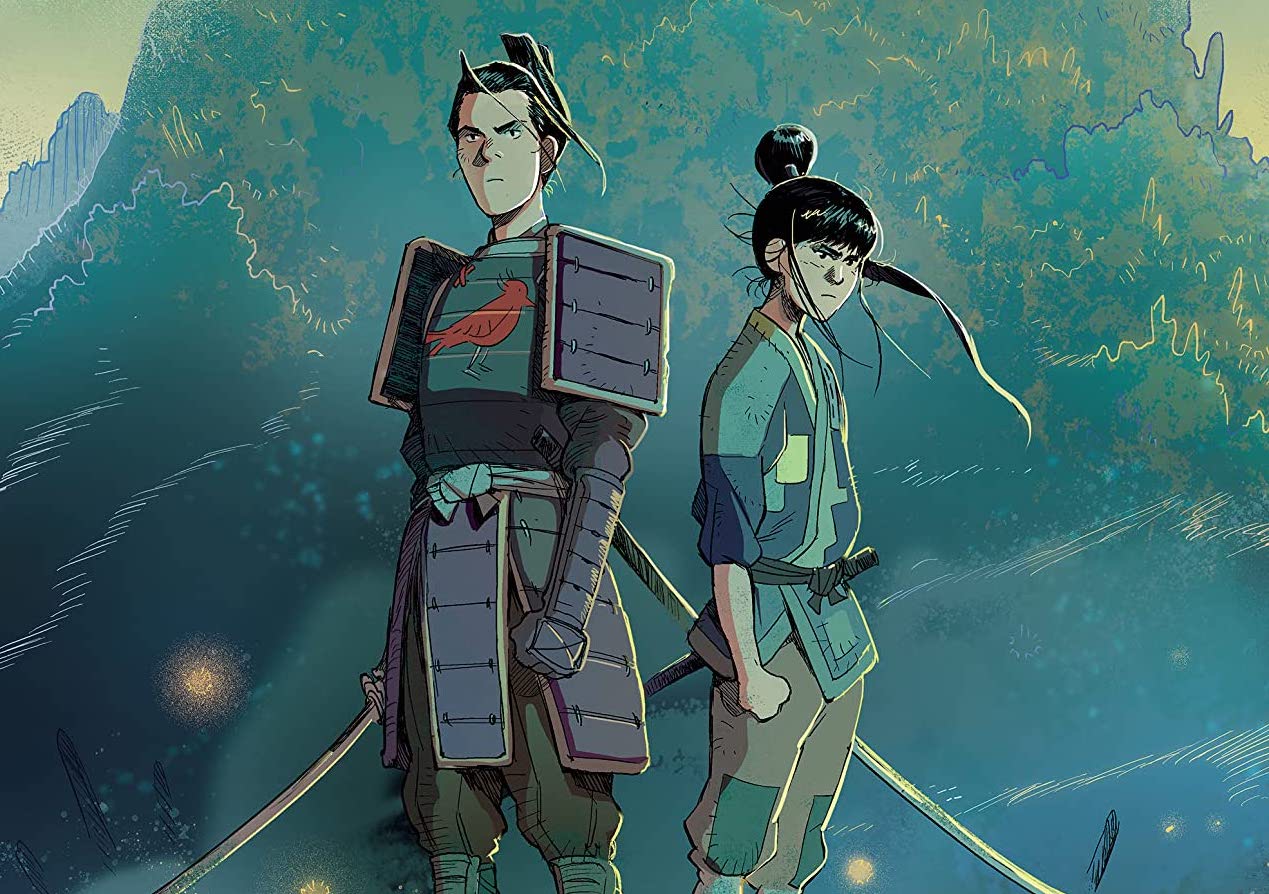As we’re approaching the end of this wretched year where we had to cope with a pandemic and the tragically unending imbalance of equality, we need stories, fictional or not, that will remain relevant and speak power to meaningful messages. For me personally, experiencing pieces of media from The Last of Us Part II to BOOM! Studios’ comic book, Ronin Island, has been a bright spot of 2020. Ronin Island has sadly concluded after its twelve issues, but do Greg Pak and Giannis Milonogiannis end the story on a high note in Vol. 3?
Our main characters Hana and Kenichi escape from the clutches of the evil Shogun, whose allied forces – comprised of bandits and the infected monsters known as the Byonin – set their sights on the home where the two young heroes lived and where their rivalry started. However, as Hana and Kenichi finally return to the island seeking refuge with their new travel companions, they are denied entry by Elder Jin and the Islanders who fear the newly mutated.
As the climax takes place on the eponymous island where the roots of the story as told by Greg Pak and Giannis Milonogiannis began, Ronin Island may be a simple story of good versus evil, but what about the hatred that has plagued the island since being inhabited? Throughout this series, we have seen the upbringing of Hana and Kenichi through flashbacks, and despite the idea of the island as a unified society, there are still hateful divides between nationalities, not least of which is Hana being harassed by Kenichi’s wrathful mother.
There may be a current threat that is the Shogun, who might as well as be a pantomime villain, but the more interesting conflict is with the island itself and how hypocritical their social intentions are. This conflict is more towards Hana than Kenichi, who doesn’t seem as headstrong as before, while the former is making somewhat reckless decisions, resulting in her realization that she can no longer call the island home, if she ever could.
However, among the strong themes and enough nuance towards a number of characters, the story has now reached its climactic war point. Although his art style doesn’t have a manga aesthetic, you can see Milonogiannis taking influence from the genre when it draws the hack-and-slash action. His simplistic art is enhanced by Irma Kniivila’s coloring, which gives every page a vibrancy that knows how to boldly use primary colors to punctuate the book’s dramatic moments.
The Verdict
We hate it when good things come to an end, but the creators of Ronin Island conclude this wonderful story on their own terms, resulting in a satisfying resolution where our young heroes have grown and can move on to a positive future.
Join the AIPT Patreon
Want to take our relationship to the next level? Become a patron today to gain access to exclusive perks, such as:
- ❌ Remove all ads on the website
- 💬 Join our Discord community, where we chat about the latest news and releases from everything we cover on AIPT
- 📗 Access to our monthly book club
- 📦 Get a physical trade paperback shipped to you every month
- 💥 And more!















You must be logged in to post a comment.